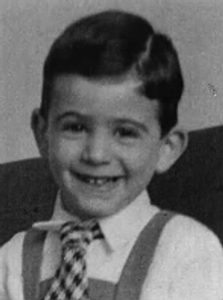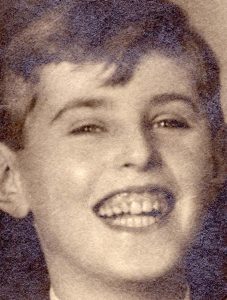Holocaust anniversary remembers lost lives of children
Contributed by: Kate Gaddis, UHCL alumnae
International Holocaust Remembrance Day was held Jan. 27 to remember those who died at Auschwitz and other camps during the Holocaust. During this time, the Jewish people of Europe were killed by the Nazis because of their religion.
Many people do not realize that half of the victims of the Holocaust were children. The majority of these children did not make it till their tenth birthday. 1 out of 3 Jewish children were murdered by the Nazis, adding up to about one million children. Most people know the story of Anne Frank, but she was not the only child who suffered. Many of the children in the concentration camps had an impact on current historians’ knowledge of the Holocaust. With that being said, here are some other Jewish children who died in the Holocaust that did not get the attention that Frank did.

One child many do not know of is Tomas Kulka. When the Nazis invaded the Czech Republic March 15, 1939, Kulka was 5 years old. Most 5-year-olds are learning to read, learning their ABCs and going to kindergarten. In Kulka’s case, he was labeled as a Jew, banned from theaters, parks, beaches and banned from school. On March 31, 1942, Kulka and his family were deported to Terezin Ghetto, where they spent about two months. When the Germans did their annual “clear out” of the ghetto, they deported the remaining Jews in the ghetto to killing facilities. Kulka and his grandmother were put on a train to Sobibor Death camp in Poland. On May 8, 1942, Kulka was dead at the age of seven due to suffocation on gas. His grandmother died right beside him, along with others who were deported to Sobibor.
Another child of the Holocaust is Gabor Neumann. Neumann was born in Bekescsaba, Hungary, and he was among the 437,402 Jews that were deported to Auschwitz in the summer of 1944. After arriving in Auschwitz, Neumann’s mother, Margit, and grandmother, Matilda were looked at carefully by the SS. Neither of the women looked good enough to work, so they were sent to the gas chambers. When the Nazis looked at Neumann, who had just turned 4 years old, he was immediately sent to the gas chambers. Like Tomas Kulka, he was also reduced to ashes, alongside his family.
Petr Ginz was born in Prague, Czech Republic. He was the oldest of two children. When Ginz turned 14, he was deported to the Terezin Ghetto. While in the ghetto, Ginz and others secretly published texts to an underground magazine called VEDEM magazine. The VEDEM magazine website states, “The chief editor Petr Ginz, and later also other boys from Heim 1, visited various corners of the ghetto, talked to its staff and inhabitants and wrote reports about them, often accompanied by drawings.”

In 1944, Ginz’s younger sister, Eva was deported to the ghetto as well. Eva became ill, and Ginz went to see her every day. Ginz’s days in the ghetto came to an end when he and his cousin Pavel were put on a train to Auschwitz Sept. 24, 1944. The two boys were immediately sentenced to death.
Ginz’s sister Eva survived the war. She noted in her diary that she kept in Terezin “Petr Lohazar,” which means in English “Petr hasn’t come back.” Her family moved to Israel after the war, and she became a painter. She published Ginz’s journals in 2010. She also saved a number of his drawings and paintings and donated them to the Israeli Holocaust Museum, Yad Vashem.
The list can go on with the various names of children who are now dead because of their religion. Anne Frank is an iconic Jewish victim of the Holocaust, but there are more to remember that contributed to the knowledge of Holocaust history. It is important to remember all the lives lost, even if they are not as famous as Anne Frank.

